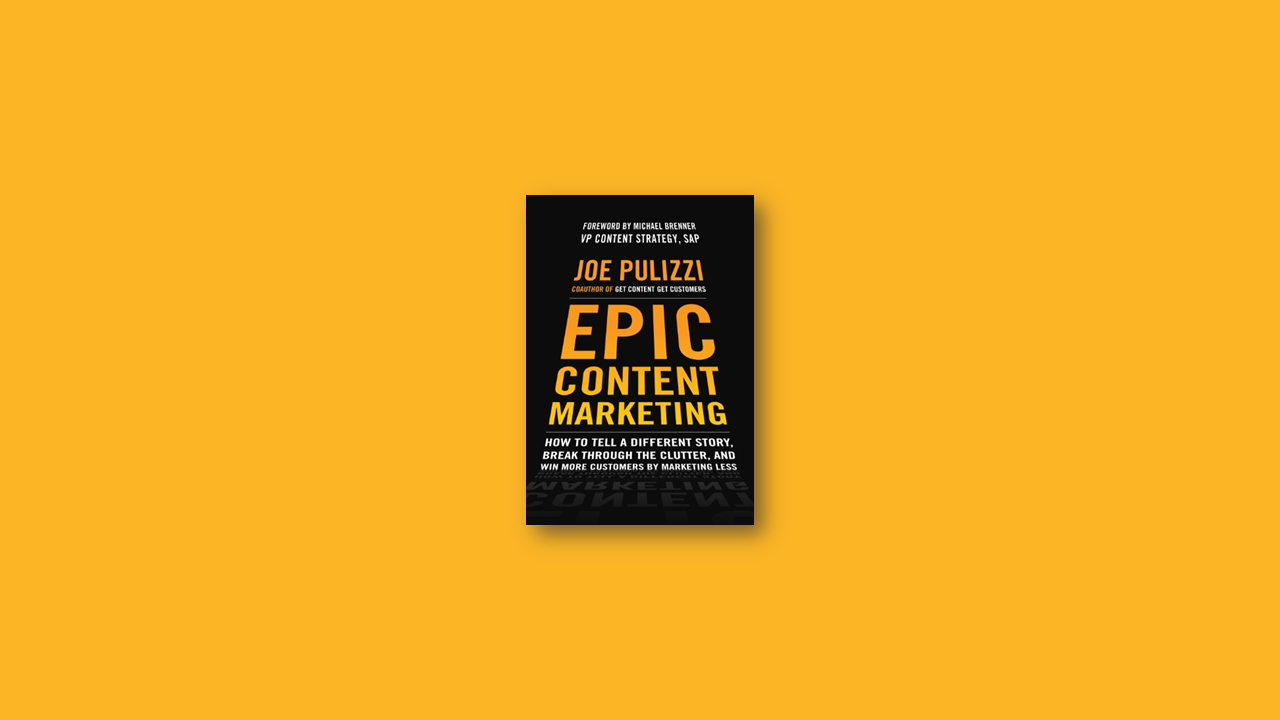What’s content marketing really about?
Content marketing isn’t new by any means. Brands have been leveraging content to tell epic stories for centuries. The difference is that now it’s critical than ever to get it right.
Content marketing is when you trigger a behavior change in your target audience using ‘content’. Your content is just a ‘content’, unless it’s anticipated, loved and wanted.
Why content marketing matters
There are over 5,000 marketing messages thrown at your prospects every single day. Unless you’re making yourself distinct to cut through the clutter, you’ll most likely end up in the discard pile. This is largely because content marketing has almost no barrier of entry. Like it or not, your competitors are waking up to this trend. It’s time for you to decide.
The business case for content marketing
Traditional marketing has always been about ‘push’ – getting products out in front of the audience and worse, pushing down their throats. Content marketing is about meeting the ‘needs’ of your customers so they become attracted to you. As you experiment content marketing, you don’t need to go all-in.
Take small and specific measures to see what works and what doesn’t. The proof will be in the pudding.
Tomorrow’s media companies
When Coca-Cola does something, people listen. The fact that it’s taking content marketing so seriously is a food for thought for all of us in the marketing industry. Red Bull and Jyske Bank are now looking more like media companies than an energy drink maker and a bank. Notice where the trend is going. And remember, content marketing isn’t just for big companies. There’ve been numerous start-ups that become huge through content marketing. You can learn to be the next one.
Don’t create content for content’s sake
Do it because you want your business to grow. Stop seeing marketing, including content strategy, as an expense. Invest in assets that distribute pay-off over the long term. If you look at marketing this way, it’ll make all the difference in your planning.
The audience persona
Audience personas get all members of your content team on the same page. This is especially important when you grow because you’ll be managing dozes of content creators day in and day out. You’ll most likely have multiple buyer personas who purchase your offering. Identifying them can be overwhelming but start with the most important and obvious one for your content plan.
Defining the engagement cycle and content niche
Don’t let your internal sales process intervene with your buyer journey. The easiest course is to populate your content grid with lots of content at the top of the funnel. This makes sense but sometimes, the opportunities lie in the ‘messy middle’ – where your prospects need a little ‘push’ to make a decision.
As you define your niche, the natural inclination is to go big and try to cover more of your market. You don’t need to become everything to everyone. You just need to become everything to someone.
Go big with the content but stay small with the niche.
The 3 pillars of content
For your content marketing to work, you need to clearly understand three things:
- Your target audience
- What you deliver to your target audience
- What you want your audience to takeaway
Tell stories, but differently and incrementally better each time. Make sure your story is unique and not just a retreat of someone else’s.
Building your editorial calendar
In content marketing, failing to plan is planning to fail. Tools like editorial calendars are your best bets to plan for epic content. You may also research tools that are readily available in the market, but remember you don’t have to use everything. Use technology to work for you, not the other way around.
Managing the content creation process
If you don’t assign someone to manage your content strategy, you’re most likely setting yourself up to confusion and duplication. Start looking to add to your organization marketers who understand how to tell a story. Pay attention to those with journalism backgrounds, as they often know their stuff really well.
The content platform
Existing platforms on Facebook, LinkedIn, Instagram and YouTube are places where your prospects could be hanging out. But as a content marketer, you should focus on your content platform first. After all, you can’t expect something you build on a rented land to last long.
Your platform may either be separate from your website or even integrated. There’s no right or wrong, so test your waters and double down on whatever works for you.
“Different platforms require different forms of storytelling. Stay away from the typical spray and pray approach. Develop a thoughtful and differentiating approach to each content platform, with consistency.”
Measuring the impact of your content marketing
At the end of the day, business owners and senior management only care about revenue, cost savings and some happy customers. Focus on these and use metrics that matter. You can’t deposit vanity metrics such as ‘likes’, ‘tweets’ and ‘shares’, although they help you tell your story.
“You may have just started or come a long way with your content marketing, but content marketing is always evolving. Stay in touch with the latest platforms, trends and tools to continue giving your customers the best storytelling on the planet.”

